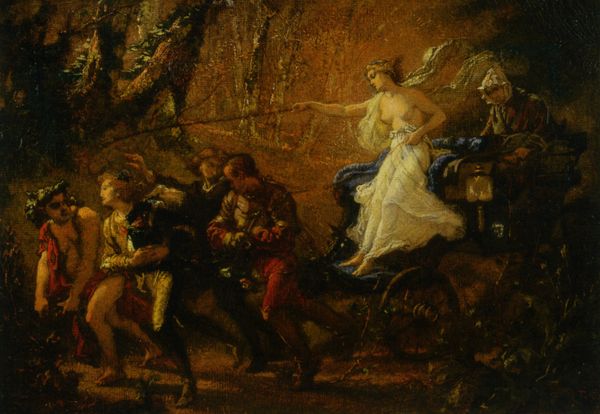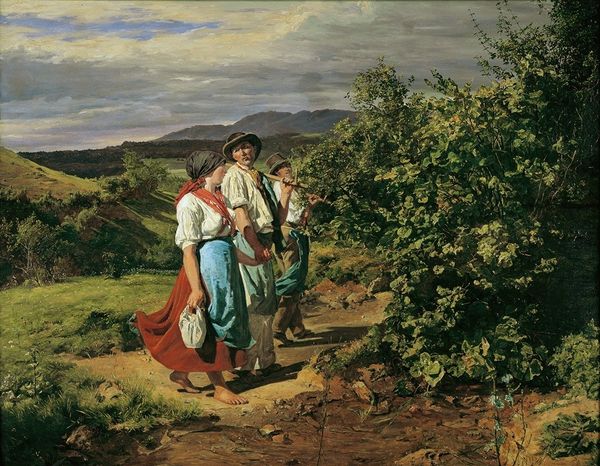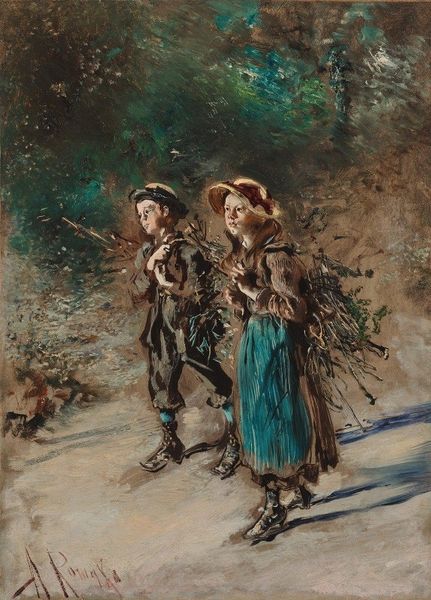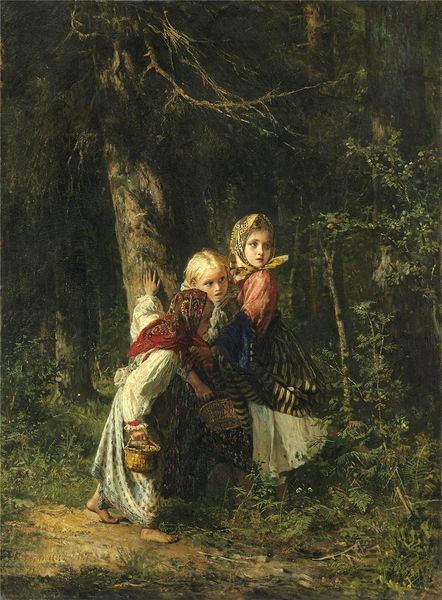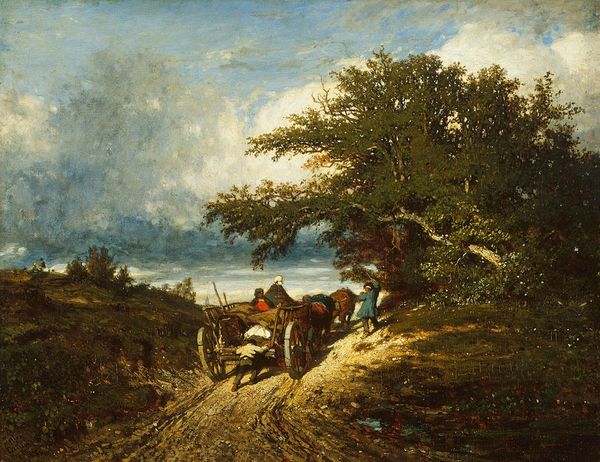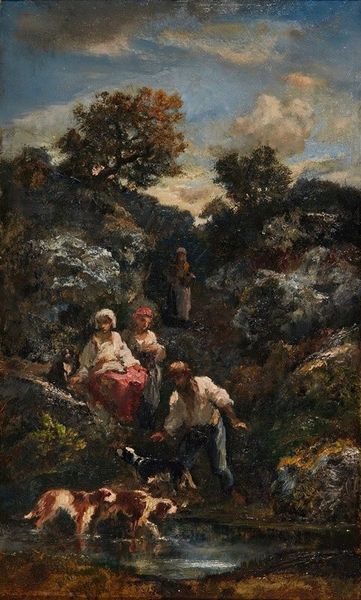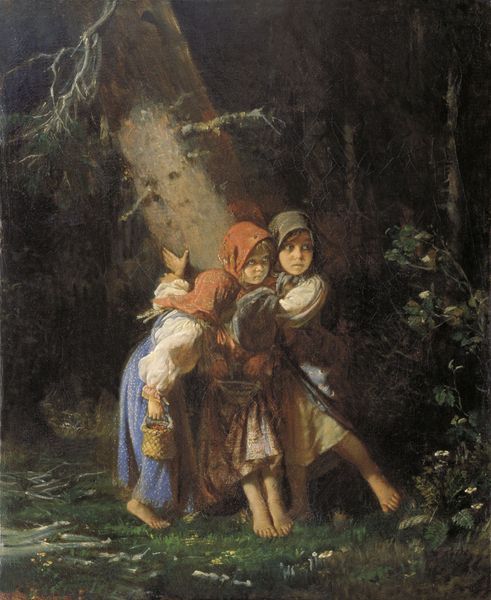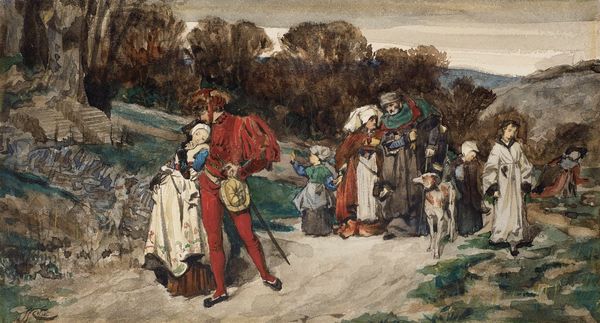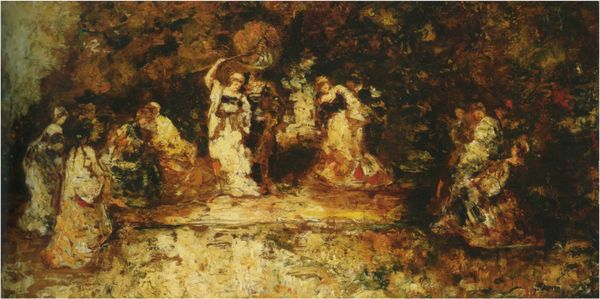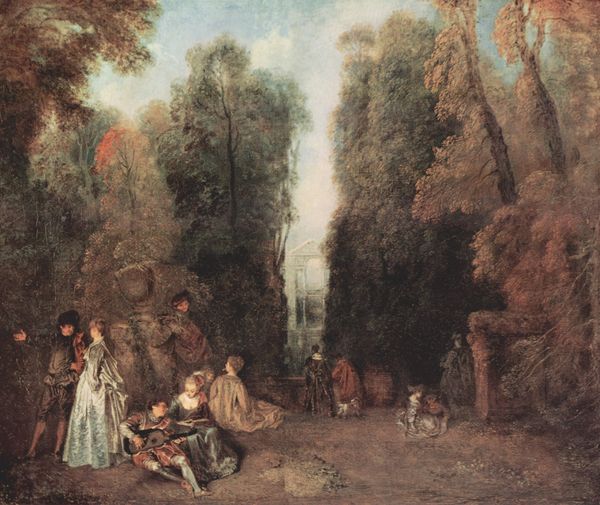
Copyright: Public domain
Curator: Ferdinand Georg Waldmüller's 1863 oil painting, "Meeting in the Woods," presents a seemingly simple encounter in a sylvan setting. Editor: The first thing that strikes me is the light. It's not overpowering, but soft, illuminating the figures in a way that feels gentle and kind. Almost dreamlike in the canopy of the trees. Curator: Waldmüller was, of course, painting during a time of great social upheaval and transition in Austria. The Biedermeier era was waning, and the rise of industrialization was starting to challenge traditional ways of life, so he tried to champion the local landscape and genre painting. Editor: I see that. The forest itself almost feels like a sanctuary, doesn't it? It has a classical archetype; the innocence is conveyed by these children, two girls holding a book and walking through this beautiful, sun dappled area encountering the friendly lad on their walk. There is also a sense of the traditional or idyllic meeting the emerging modernity through these genre elements and figuration.. Curator: Precisely. The very act of representing this encounter elevated its significance. It underscored a need to romanticize and reaffirm a connection to a past rapidly disappearing in the face of social changes. Waldmuller understood very well how paintings in public art exhibitions at the time helped shape cultural meaning. Editor: It makes me consider the book being carried. A symbol of education, literacy, maybe even religious instruction. Combined with the forest setting, it could represent a search for knowledge and the values found in nature. Even the shadow of the foreground is a strong image for me to consider what isn’t necessarily on display at first glance. Curator: Absolutely, that is astute! And perhaps even to suggest there are dangers or temptations as the young people grow into adulthood. By portraying them with what seems to be a charming fellow carrying a sprig, he is also suggesting traditional Austrian customs around courting rituals that involved presenting flowers. Editor: It really does speak volumes, doesn't it? In the simplicity of it all, with such detailed rendering! These paintings helped shape and reflect a particular kind of bourgeois self-image emerging then, rooted in idealized landscapes and values, Curator: Waldmuller’s keen observational approach helped him render his own type of social commentary on an evolving Europe, one brushstroke at a time. Editor: And his commitment to symbols provides us with much to decipher.
Comments
No comments
Be the first to comment and join the conversation on the ultimate creative platform.
